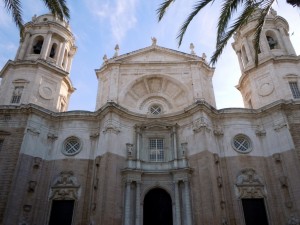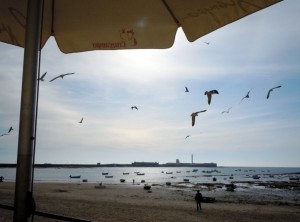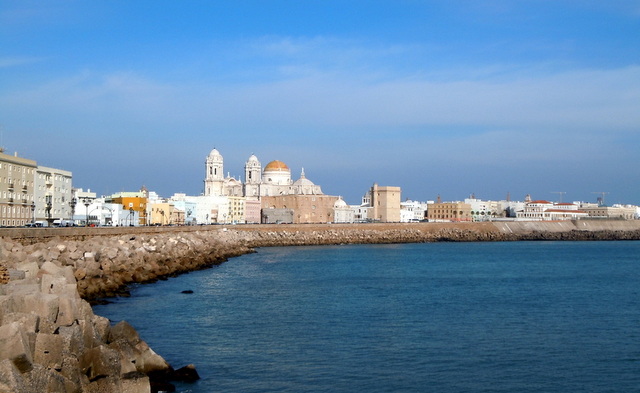This week we have another guest blog post by history buff, tour guide and long-time Seville resident Peter Tatford Seville Concierge. This time, Peter takes us to Malaga.
Malaga has long been one of my favourite Andalucian cities. It’s not just a place to pass through going to and from the airport, or a high-rise resort with so-so beaches. Though there is still an element of that, in recent decades the city has done a lot to change its image, and its heart is now very firmly in the right place, with a pedestrianised historic centre, a thriving food culture, some of the best parks and gardens I know of anywhere, a recently renovated harbour front with shops and restaurants, and loads of cool museums and art (from favourite son Picasso to the Contemporary Arts Centre).
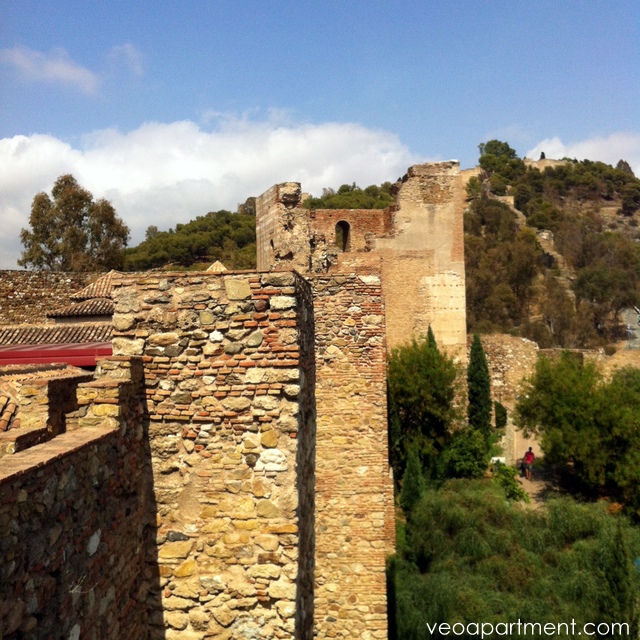 at the top of the Alcazaba
at the top of the Alcazaba
For me, though, one of the most important things is that this is a city with history. Founded by the Phoenicians, and occupied by the Romans, its most impressive monuments date from the long Moorish period. From almost anywhere in the city you can see its two fortresses, the lower Alcazaba (from the Arabic al-qasbah, a citadel) and the upper Gibralfaro (gebel-faro, the rock of the lighthouse; Gibraltar, the rock of Tariq, has the same derivation). From below it can be seen to best advantage from alongside the Roman amphitheatre, itself rediscovered by accident in 1951 when the houses on the hillside below the castle were demolished to make way for a planned garden. Although the Alcazaba was also the palace and royal residence of the local kings, its primary role as a fortress is most obvious from here. There is an entrance to the castle here, but there is a second way in (all will be explained later) which avoids the steep climb up from the bottom.
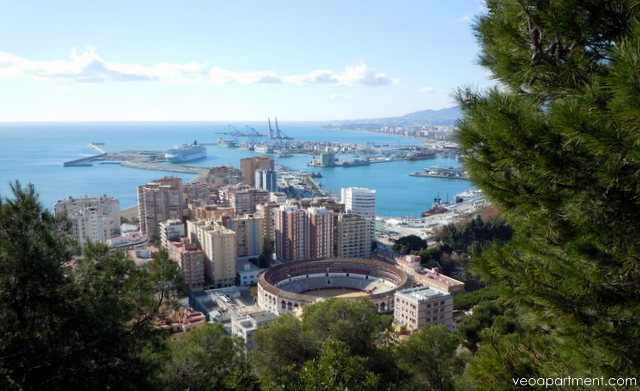 view of the port from the Gibralfaro
view of the port from the Gibralfaro
In the meantime, take a trip up to the top castle, the Gibralfaro. The Phoenicians had a lighthouse and fortified enclosure here, and the current Moorish building dates back to the 10th century, with a substantial rebuilding in the early 14th. Our tip for the Málaga novice is to avoid going up the steep path that connects the two castles, and instead to take a taxi, or a bus up the back of the hill, and walk down the path to the Alcazaba afterwards. One of the main reasons for coming up here, as you will see for yourself when you get there, is the magnificent view right across the city, from the bullring almost immediately below you, past the Alcazaba, Park Malaga and the harbour, to the mountains beyond. Enjoy it from the castle walls, the mirador (lookout) or best of all from the terrace of the Parador Hotel with a drink to go with it. It’s a magic moment.
From there walk all the way down the hillside path to the bottom of the wall of the Alcazaba that faces the sea to find the alternative entrance. This is, in fact, a lift that takes you almost to the top of the centre of the fortress. It’s always my preferred option, particularly in summer, to be carried to the top of things, and only to walk downwards. During the period of the Córdoba Caliphate this hill had a modest fortification to protect the city from pirates. In the more troubled times that followed it, the local ruler built his residence and the double-walled castle enclosure that still exists today. It’s considered to be the best-preserved of all the Spanish alcazabas, and although much smaller than its counterparts in Granada and Seville, the central palace area with its courtyards, pools and gardens, still gives some idea of the high level of civilisation compared to most of the rest of Europe.
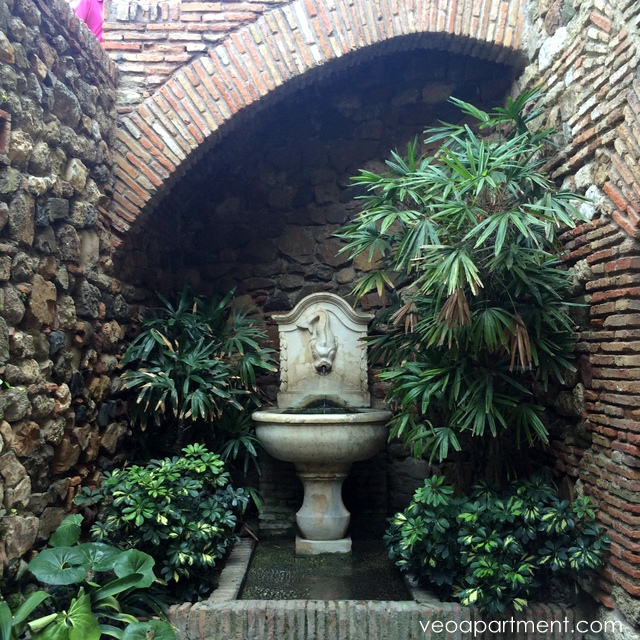 inside the Alcazaba
inside the Alcazaba
Walking along the old battlements it’s easy to see why the siege by the Christian armies leading up to its fall in 1487 was the longest of the entire reconquest period. The castle has endured ever since, surviving abandonment, neglect, and even being occupied as a tenement slum by the city’s poor before being carefully restored during the 1930s and 40s.
I think Malaga is one of those places that always seems to have another side of itself that it only reveals gradually, so it’s well worth renting an apartment and taking a few days to explore what’s on offer.
